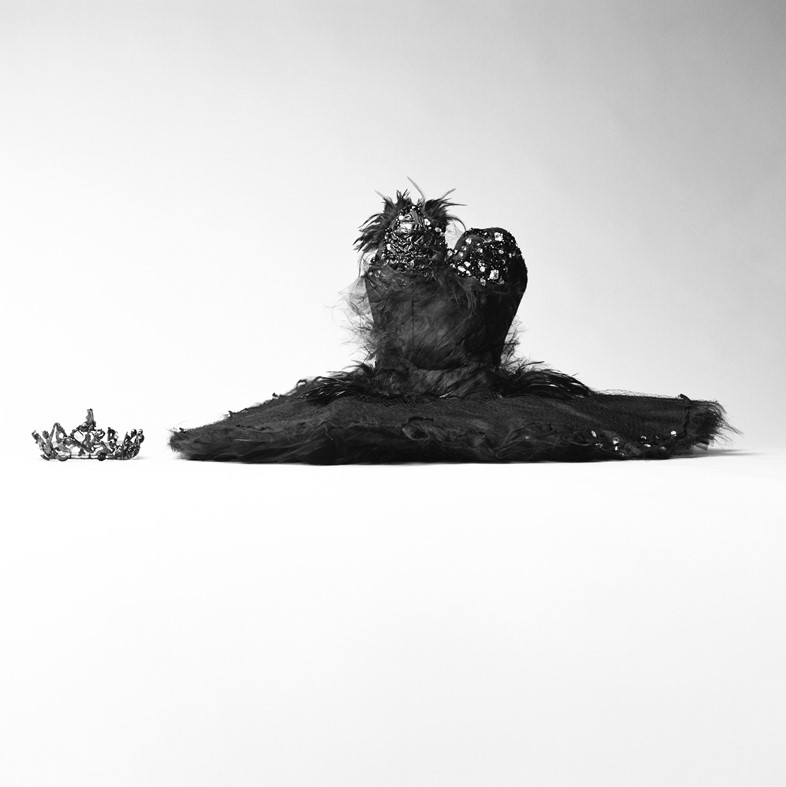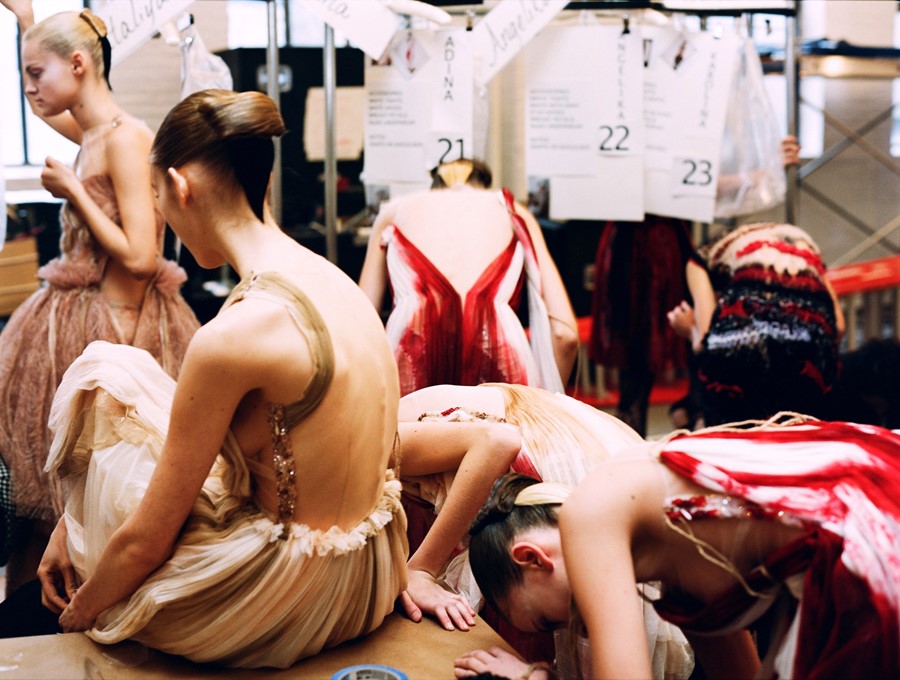As an exhibition of their work continues in Washington DC, the sisters talk to AnOther about a 13-year career, then and now
Rodarte is a brand whose inception is inseparable from its sensibility. Born and raised in North California, Kate and Laura Mulleavy started the Los Angeles-based label after studying history of art and modern literature, respectively, at Berkeley. Their designs combined an intricate, hand-finished quality with an aesthetic that was feminine, often resolutely dark, and undoubtedly modern; drawing on the wealth of pop culture that growing up in California provided. Rodarte quickly gained critical acclaim, winning the CFDA Emerging Womenswear Designer award in 2008, dressing everyone from Kirsten Dunst to Rihanna and Michelle Obama, and trying their hand at film direction and costume design.
A new exhibition at the National Museum of Women in the Arts in Washington DC looks at Rodarte’s 13-year history, exploring the ideas that have made the brand into what it is today. “It’s not technically a retrospective,” says Laura, “but it feels like it because you go through an entire body of work and look at the recurring themes in our collections.” Here, the sisters look back on the moments that have helped shape Rodarte, the women that inspire them and what it’s like to see your designs on the Hollywood Walk of Fame.

On their recurring love of nature...
Laura Mulleavy: “The Garden Room in the exhibition combines our earliest and latest collections. So it’s really interesting for us to look at two periods side-by-side, and realise they are talking to each other about the same themes and ideas, like the obsession with nature. Alongside the baby’s breath dress from Spring/Summer 2018, there’s a yellow gown in that room, from our Autumn/Winter 2007 collection, that was very important in discovering our desire to play with texture and colour. It’s a yellow dress with french accordion pleats that fit around the body and there’s roses laid within the texture, all pale yellow and cream coloured. I think that piece is so important to us because we were really discovering what our voice was at the time we made it. It was one of our earliest pieces that we really felt showcased what we were interested in doing within fashion. Later the Metropolitan Museum of Art acquired it for a show called blog.mode: addressing fashion, so it was interesting to see that a critical view found those ideas and techniques interesting as well, because it is a piece that was really personal to us.”
On Black Swan, beauty and terror...
LM: “What we always put into our clothing is details that are very delicate but also, at times, there’s a very hard edge. Natalie [Portman] wore one of our dresses and afterwards said, ‘I really think you’d be good at making ballet costumes’, because she saw that sensibility. Ballet is the most beautiful art form, but it’s so brutal to the human body, and you can put that dichotomy onto the body, in the form of a dress. Two of the costumes we made for Black Swan are in the exhibition, and that was a special moment because it triggered something deep within us about wanting to express more than fashion. We have always treated design as if we were telling a narrative. Black Swan took fashion outside of itself, and put it on a larger stage, for a larger audience. That year we went to Hollywood Boulevard, and outside of the Grauman Theatre people dress up as these characters, like Superman and Batman, that you would see from far away and immediately recognise what it is. And then they had Black Swan, and I remember thinking, that’s powerful design. It made me really proud.”

On Star Wars...
Kate Mulleavy: “Two of our collections had been inspired by Star Wars, Spring/Summer 2009 in a more abstract way, and then Autumn/Winter 2014 in a more literal sense. We were allowed to go through the archives of the film stills, so we got these beautiful images and digitised them, then combined them with a technique of hand-smocking. So there’s 1,000 pictures hand-sewn together that made up the digital print. It was about combining this world of something that is created and something that is handmade, which is really what made early Star Wars so magical. It made those who watched it feel that you could touch outer space.”
On Woodshock, using design to show decay, and maturing as designers...
LM: “As you walk into the exhibition, the first room looks at collections that all deal with decay and ruin and techniques of ageing. And behind all those really colourful pieces is a little vignette of costumes from Woodshock. The film itself shows someone’s interior space and the decay of the mind, but there’s very few words in it – even when the character played by Kirsten [Dunst] does talk, it’s not revelatory. So one of the things we played with was showing decay through clothing – some of the costumes would have five different iterations, as it goes through a process of ageing. It’s very subtle, it’s not a huge thing, you might not even notice it on screen, but I think that subtlety allows the viewer to connect clothing to the narrative, make them feel what the character is feeling. We felt like new people after [Woodshock], and it affected our design process. We started working on it in from 2011 to 2012, and from that moment on, most of the collections have had a film reference. I felt more assured when I was making choices as a designer. It was definitely a maturing of the mind.”

On the Autumn/Winter 2018 campaign shot by Autumn de Wilde and being women in the arts...
LM: “We felt the need to do a collection and we didn’t want to do a runway show. I think the world is shifting how we view fashion and how we’re consuming it. It’s so sped up, there’s so many shows – we just felt overwhelmed with it. So we were talking over the holiday, thinking, we should ask our friends to come over and put on these clothes and we’ll take beautiful portraits, because that’s something we can have forever. And when you do things with people you know and love there’s a very special quality to the image. We’ve worked with these women over the years – you really build a rapport and trust. Having these photos now is interesting, because women say to us, ‘it felt wonderful to know I could trust the situation’. So the images came out of a time when marginalised voices were coming to the forefront and people were saying, ‘let’s talk about women artists’. It’s important to be able to say that working in fashion is different for women.”
Rodarte is on at the National Museum of Women in the Arts, Washington DC, until February 10, 2019.
